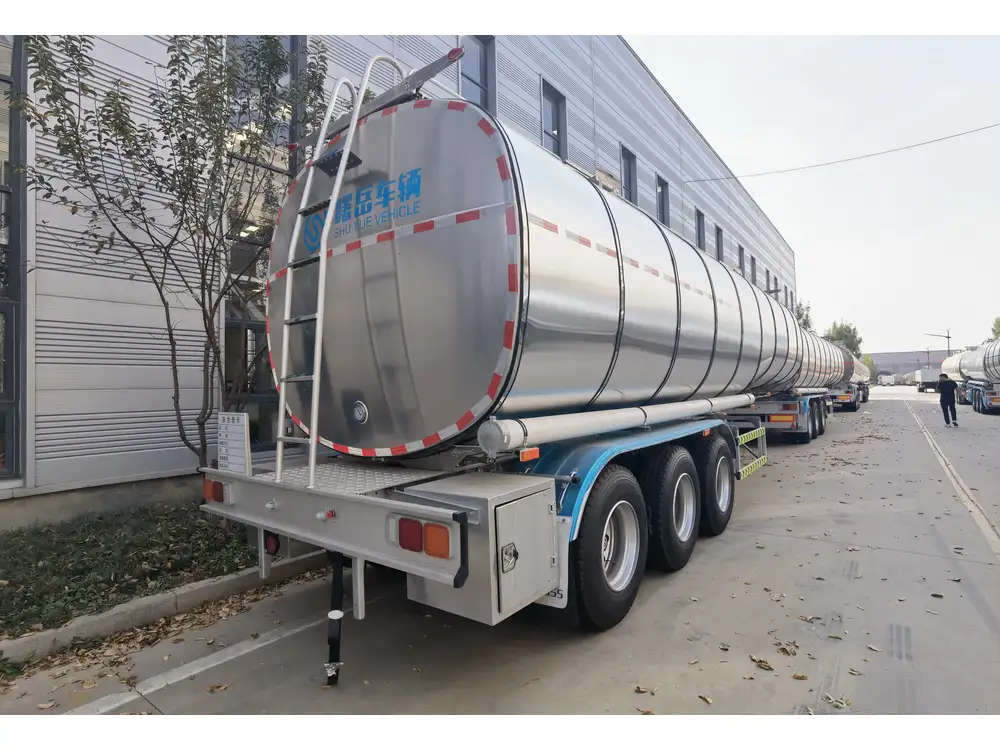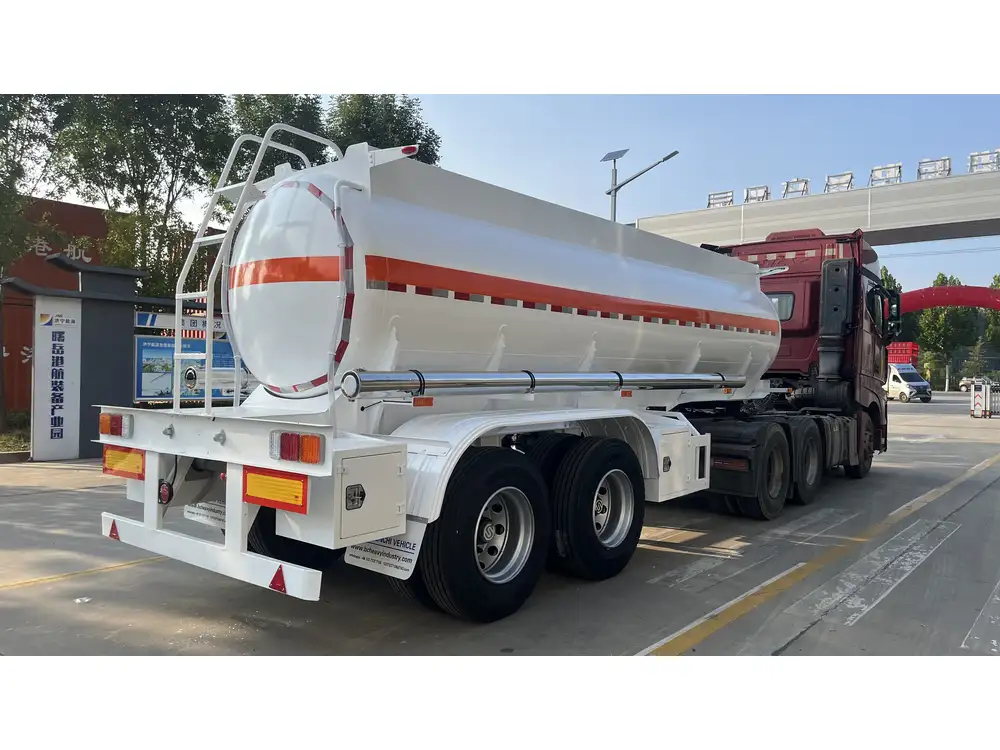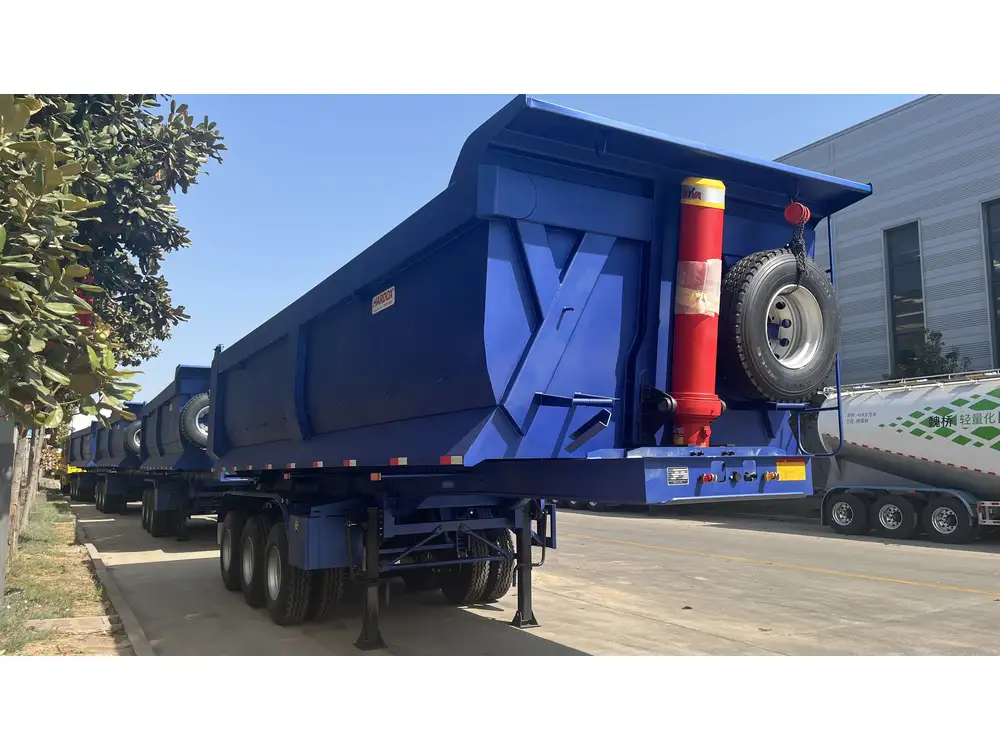When it comes to transporting firewood, the choice of conveyance method is paramount. Dump trailers have carved out a niche in this domain, blending efficiency with convenience. However, a common question arises among users: How much firewood can a dump trailer hold? Understanding this capacity can save time, enhance productivity, and ensure that tasks are executed smoothly. In this comprehensive guide, we delve into the intricacies of dump trailers, their capacities, and considerations for loading and transporting firewood effectively.
Unpacking Dump Trailer Capacities
What is a Dump Trailer?
A dump trailer is a specialized vehicle designed for transporting bulk materials. It features a hinged bed that can be raised to allow for easy unloading, making it ideal for carrying heavy or loose loads such as dirt, gravel, and firewood. The design usually allows for simplicity in loading and unloading, addressing several operational pain points.

Size Matters: Dump Trailer Dimensions
The size of a dump trailer directly affects its capacity. The following table illustrates various dump trailer dimensions and their corresponding firewood capacities:
| Trailer Size (Cubic Yards) | Volume (Cubic Feet) | Approx. Firewood Capacity (Board Feet) |
|---|---|---|
| 5 cubic yards | 135 | 1.5 cords |
| 6 cubic yards | 162 | 1.8 cords |
| 10 cubic yards | 270 | 3 cords |
| 14 cubic yards | 378 | 4.2 cords |
| 16 cubic yards | 432 | 4.8 cords |
Understanding Cords and Firewood Volume
Before diving deeper, it’s essential to clarify what a cord of firewood is. A full cord is typically defined as a stack of wood measuring 4 feet high, 8 feet long, and 4 feet wide, amounting to 128 cubic feet. When estimating how much firewood your dump trailer can carry, it’s important to convert trailer dimensions into cords for a clearer understanding of full loads.
Calculation Methodology for Firewood Loading
Calculating the approximate number of cords of firewood your dump trailer can carry is not an arduous task. Here’s a straightforward approach:
Determine the Volume: Convert your dump trailer’s capacity into cubic feet. (e.g., a 10 cubic yard trailer equals 270 cubic feet)
Assess Firewood Volume: Determine how firewood is stacked in the trailer. Typically, firewood is loosely stacked, which may lead to slight variations in volume.
Conversion to Cords: Divide the cubic feet by the volume of a cord (128 cubic feet). For example:
- A 10 cubic yard trailer containing 270 cubic feet divided by 128 cubic feet equals approximately 2.11 cords.

Key Considerations for Loading Firewood
When preparing to load firewood into your dump trailer, several factors merit consideration to optimize space usage, ensure safety, and avoid exceeding weight restrictions.
1. Weight Limitations
Each dump trailer comes with a maximum weight limit. For instance, if you’re utilizing a standard 7,000-pound capacity trailer, it’s crucial to remember that different types of firewood have varying weights. Oak can weigh about 4,000 pounds per cord when seasoned, while pine generally weighs less at around 2,500 pounds. Always verify the type of wood and its weight to avoid risking trailer damage or accidents.
2. Stacking Techniques
Efficiently stacking firewood involves more than just throwing the logs into the trailer. Some effective methods include:
- Crisscross Stacking: This method increases stability and allows for better airflow, preventing moisture buildup.
- Pallets for Elevation: Utilizing pallets can help elevate the wood, reducing contact with ground moisture and improving loading efficiency.

3. Securing Your Load
To avoid any accidents during transport, securing the firewood load is essential. Use ratchet straps or rope to keep the firewood in place. This not only ensures safety but also lowers the risk of losing some of your load during transit.
Real-World Applications and Benefits
Engaging with dump trailers for firewood transportation unveils multiple advantages. Here are just a few:
Time Efficiency: Dump trailers simplify loading and unloading processes significantly, which saves precious time during busy seasons.
Versatility: Beyond just firewood, dump trailers can be used for various forms of bulk transport, making them excellent investments.
Reduced Labor Costs: By mechanizing the transport process, it reduces the manual labor required, cutting down on costs.
Frequently Asked Questions (FAQs)

What is the average cost of a dump trailer for firewood transport?
Prices vary significantly based on trailer capacity, brand, and additional features, but expect to spend between $3,000 to $10,000 for new models.
Is it better to transport wood when it’s seasoned?
Absolutely. Seasoned wood not only weighs significantly less than green wood but also ignites more easily, ensuring a better burning experience.
How do I maintain my dump trailer?
Regular checks on hydraulic systems, tires, and the bed can prolong the lifespan of your trailer. Simple cleaning after use, especially of debris, ensures it remains in an optimal condition.

Conclusion: Maximizing Your Dump Trailer for Firewood Transport
Understanding the dynamics of your dump trailer’s capacity provides a distinct advantage when transporting firewood. Realizing how much firewood can be transported efficiently, while considering structural integrity and weight limitations, equips users with the knowledge necessary for optimized operational effectiveness. Embracing effective loading techniques and ensuring proper maintenance further enhances the user experience.
Every log counts—make sure you’re getting the most out of your dump trailer on your next firewood task. Through informed choices and strategic planning, you not only safeguard your resources but also enhance the efficiency of your operations. Investing in a quality dump trailer is more than just a purchase; it’s a critical decision that will yield years of benefits, ensuring your endeavors in transporting firewood are as seamless as possible.



